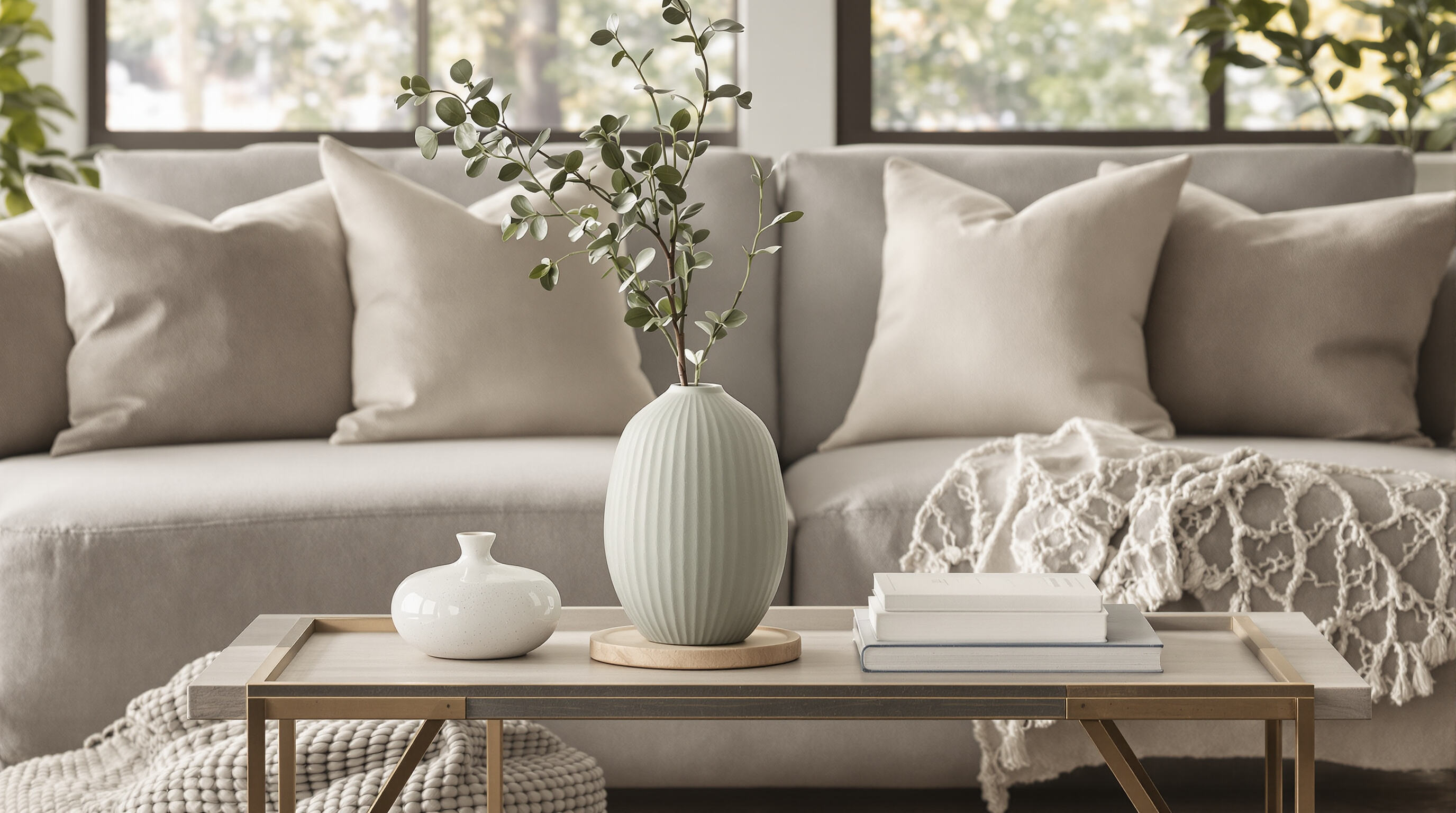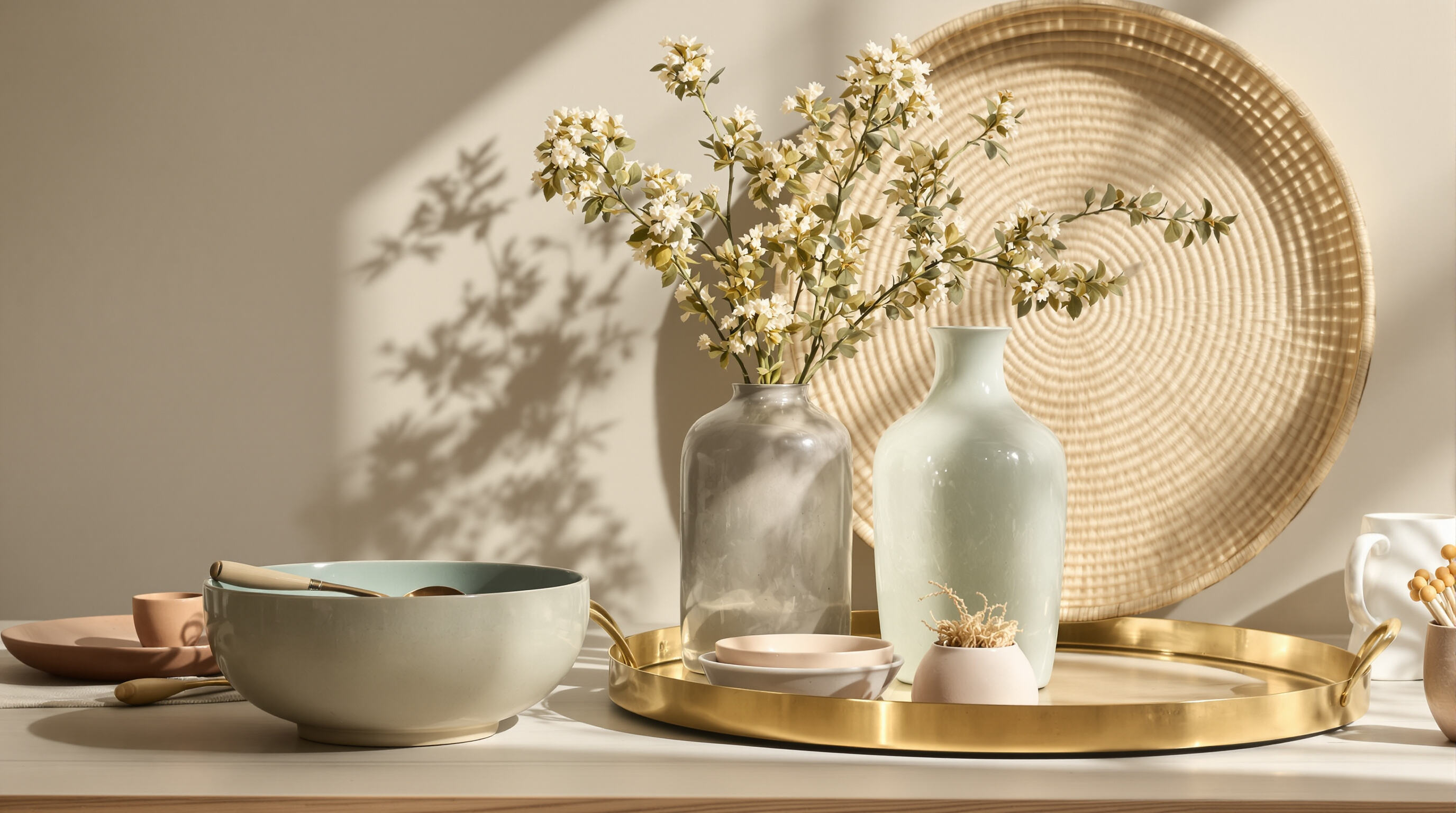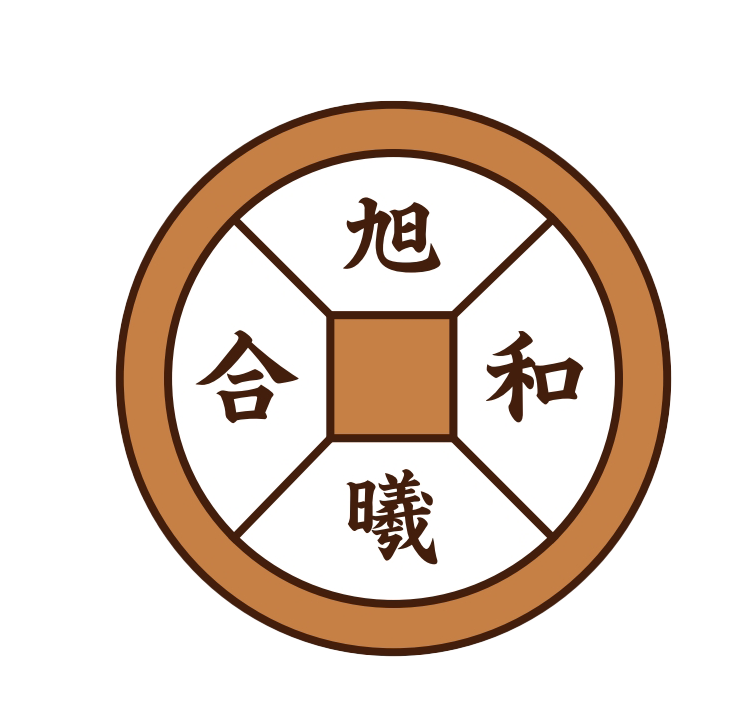현대 인테리어에서 세라던의 미학적 매력 이해하기
세라던의 색상 특성: 변색 능력이 뛰어난 녹회색 톤
청자색의 초록빛 회색은 조명 조건에 따라 약간씩 변하며, 민트의 상쾌함을 간직하면서도 울타리의 차분한 감각을 혼합하되 어느 한쪽에도 얽매이지 않습니다. 이 색상이 매우 다용도로 사용되는 이유는 따뜻한 톤과 서늘한 색조 모두와 동등하게 잘 어울리기 때문이며, 이는 서로 다른 스타일이 조화를 이뤄야 하는 공간에서 디자이너들이 이를 사랑하는 이유입니다. 단순한 중성적인 색조와는 달리 청자색은 벽에 개성을 부여할 만큼 충분한 시각적 흥미를 지녔으면서도 도자기 꽃병이나 아마직 커튼과 같은 단순한 인테리어 요소들과도 조화를 이룹니다.
도자기에서의 청자의 역사적 뿌리와 현대적 재해석
16세기 중국 도자기에서 유래한 청자 유약은 옥 같은 마감 처리와 자연에 대한 상징적 연관성으로 귀중하게 여겨졌습니다. 오늘날 디자이너들은 세련되고 비대칭적인 꽃병과 추상적인 벽 예술 작품을 통해 이 유산을 재해석하며, 유기적인 본질을 유지하면서도 현대적인 실루엣과 조화를 맞추고 있습니다.
왜 청자색이 미니멀리즘 및 스칸디나비아 인테리어를 향상시키는가
청자색의 절제된 따뜻함은 스칸디나비아 디자인이 강조하는 빛과 질감을 더욱 돋보이게 합니다. 청자색 장식 화병을 자연 그대로의 나무 소재나 린넨 소재의 가구와 함께 배치하면 단순하면서도 포근한 분위기를 연출할 수 있습니다. 또한 청자색은 시각적 안정감을 해치지 않으면서도 테라코타 화분이나 브라스 고정장치 같은 강렬한 액센트 색상과도 자연스럽게 조화를 이룹니다.
데이터 포인트: 2023년 후즈 리포트에 따르면 인테리어 디자이너의 68%가 은은한 톤의 도자기 수요 증가를 보고함
2023년 후즈 인테리어 디자인 트렌드 리포트에 따르면 전문가의 3분의 2 이상이 청자색과 같은 은은한 도자기 제품에 대한 고객의 요청이 증가하고 있다고 밝혔습니다. 이는 극적인 대비보다는 촉감 있는 마감 처리와 톤 온 톤 계층화를 중시하는 '조용한 럭셔리(Quiet Luxury)' 트렌드로의 전환과도 일치합니다.
현대 공간에서 청자색 장식 화병 스타일링하기

장식 화병을 선반 및 콘솔 테이블의 시선 집중 포인트로 활용하기
청자(CELADON)의 도자기처럼 녹색-회색 빛의 유약은 장식용 꽃병을 어떤 공간에도 어울릴 수 있는 중앙 요소로 변모시킵니다. 대칭을 따르지 않게 벽면 선반 또는 콘솔 테이블 위에 배치하면 현대적인 기하학적 구조와 유기적인 곡선을 조화롭게 연출할 수 있습니다. 가장 효과적으로 활용하려면, 키가 큰 청자 꽃병에 조형적인 말린 가지나 미니멀한 녹색 식물을 함께 배치하세요. 이는 공간의 중심을 잡아주면서도 단순함을 해치지 않습니다.
최적의 공간 배치: 거실, 현관, 침실
거실에는 청자색 꽃병을 커피 테이블 위에 두면 특히 잘 어울립니다. 특히 부드러운 리넨 재질의 쿠션들로 둘러싸여 있을 경우, 우리 모두가 갈망하는 자연스럽고 평온한 분위기를 연출해줍니다. 현관 공간에는 이러한 녹청색 빛이 감도는 작은 꽃병들을 문 근처의 반달 모양 테이블 위에 두면 매우 멋지게 보입니다. 이는 마치 고전적인 분위기와 현대적인 감각을 혼합하여 방문객에게 좋은 첫인상을 심어주는 듯합니다. 침실 공간도 잊지 마세요. 청자 꽃병을 침대 옆 탁자에 올려두면 공간에 고요한 우아함을 더해줍니다. 부드러운 색조는 흰색이나 아이보리 색상의 침구와는 조화롭게 어우러지며, 짙은 색 목재 가구 위에서는 또렷하게 돋보이는 효과를 줍니다.
사례 연구: 청자 꽃병을 사용해 산업적 마감재의 느낌을 부드럽게 만든 로스앤젤레스의 로프트 공간
LA의 한 최근 로프트 개조 현장을 보세요. 청자색이 산업적 공간에서 얼마나 훌륭한지를 보여주는 사례입니다. 누군가 세 개의 손으로 만든 청자색 화병을 오래된 강철 선반 위에 올려놓았는데, 그 모습이 노출 콘크리트 벽과 대비되어 눈에 띱니다. 이 화병들은 유약 처리 방식 덕분에 자연스럽고 흙냄새 나는 듯한 느낌을 주어, 마치 공간 전체를 덜 각지르게 만들어 줍니다. 또한 각기 다른 화병마다 약간씩 색상이 달라 시선을 끌기는 하지만 지나치게 화려하지 않습니다. 특히 흥미로운 점은 청자색이 가지고 있는 회색 톤이 주변에 매달려 있는 광택이 나는 니켈 소재의 조명들과 잘 어우러진다는 것입니다. 이로 인해 전체 공간에 거친 질감과 매끄러운 마감 사이의 균형이 잘 잡혔습니다.
청자색과 조화로운 색채 계열 및 질감 조합하기

청자색의 부드러운 녹색-회색 계열은 현대 인테리어에서 놀랄 만큼 유연하게 적용될 수 있어 중립적인 기반 색으로도, 포인트 컬러로도 동일하게 잘 어울립니다. 전략적으로 조화로운 색상과 질감과 조합함으로써 여러분의 장식용 화병 어떤 공간에서도 조화를 이루는 요소가 됩니다.
청자색과 흰색을 조합하여 깔끔하고 경쾌한 미학 연출
미니멀하거나 스칸디나비아 스타일의 공간이라면 청자색 꽃병을 깨끗한 백색 배경과 함께 매치해 보세요. 이러한 컬러 팔레트는 자연광을 강조하고 시각적으로 여유로운 공간감을 연출해 주며, 특히 오픈 플랜 거실이나 침실에 이상적입니다. 흰색 콘솔 테이블이나 벽면 선반 위에 놓인 청자색 꽃병은 공간에 은은한 색채를 더해줍니다.
청자색과 빨간색 포인트를 대비시켜 강렬한 시각적 긴장감 연출
청자색과 풍부하고 짙은 빨강색(예: 버건디나 테라코타)을 매치하면 실내 공간에 드라마틱한 효과를 줄 수 있습니다. 여러 인테리어 디자이너들은 이러한 대비가 동아시아 도자기의 고전적인 아름다움을 연상시키지만, 오늘날의 현대적인 주택에서도 놀랄 만큼 잘 어울린다는 것을 관찰해 왔습니다. 2024년 최신 Livingetc 컬러 매칭 가이드에 따르면, 청자색 옆에 라커 레드 디테일을 배치하면 부드럽고 자연스러운 톤이 돋보일 수 있습니다. 이 색상 조합은 특히 현관이나 식당과 같이 사람들이 모이는 공간에서 시각적인 재미를 더해 주면서도 전체적으로 공간을 압도하지 않는 효과가 있습니다.
청자색과 테라코타, 웜 비지 등 자연스러운 톤 조화롭게 믹스하기
청자색은 자연색 계열과 매치할 때 빈티스한 감성과 현대적인 미학을 연결하는 다리 역할을 합니다.
- 테라코타 : 주방이나 일광실에 따뜻한 느낌을 더해줍니다.
-
웜 비지 : 보헤미안 또는 팜하우스 스타일 공간에서 자연적인 질감을 강조해 줍니다.
청자색을 계열로 레이어링할 때 장식용 화병 라탄 바구니나 쥬트 러그와 함께 매치하면 안정되고 우아한 분위기를 연출할 수 있습니다.
전략: 린넨, 우드, 금속의 질감을 레이어링하고 청자 장식 화병을 중앙에 배치하는 인테리어 연출
| 식감 | 효과 | 응용 예제 |
|---|---|---|
| 린넨 | 금속 마감재의 경직된 느낌을 부드럽게 해줍니다. | 드레이프 처리된 테이블 러너 |
| 나무 | 유기적인 대비를 더해줍니다. | 티크 재질의 사이드보드 또는 오크 재질의 선반 |
| 금속 | 인더스트리얼한 감각을 도입합니다. | 황동 트레이 또는 철제 양초대 |
이 삼중의 요소는 청자 화병을 중심으로 촉각적인 깊이를 만들어냅니다. 균형을 맞추기 위해 금속 장식 요소는 전체 구성의 20% 이내로 제한하는 것이 좋습니다.
장식용 화병에 적합한 형태, 소재, 마감 선택하기
청자 유약과 잘 어울리는 도자기 형태: 유기적인 형태, 비대칭 형태, 원통형 형태
청자색의 부드러운 녹색-회색은 고전적인 매력과 현대적인 요소가 혼합된 형태와 조합할 때 특히 잘 어울립니다. 최근에 자주 보는 유기적인 형태, 즉 부드러운 곡선과 기하학적인 형태의 오브제들은 단순한 공간에 생기를 불어넣죠. 이러한 형태는 청자 도자기의 자연스러운 느낌과도 잘 조화를 이룹니다. 거주 공간에 조금은 색다른 무언가를 원하는 사람들에게 비대칭의 작품은 과하지 않으면서도 개성 있는 포인트를 줄 수 있습니다. 예를 들어 원기둥 모양의 꽃병을 살펴보면, 직선적인 라인은 책장 위에 다양한 소품을 섞어 놓았을 때 전체적인 균형을 잡아주는 역할을 하죠. 동시에 유약이 표면 위에서 색이 어떻게 변하는지를 효과적으로 보여줍니다. 가장 좋은 점은 이러한 형태가 꽃을 담아도 좋고, 장식용으로 혼자 서 있어도 훌륭하게 보인다는 것입니다. 참으로 다용도로 쓸 수 있는 형태라고 할 수 있겠네요.
내구성과 마감을 기준으로 한 도자기, 스톤웨어, 세라믹 기초 비교
어떤 재료를 선택하느냐에 따라 외관과 내구성에 큰 차이가 납니다. 예를 들어, 도자기는 고급스럽고 섬세한 느낌을 주어 고급 공간에 적합하지만, 조금만 부주의해도 쉽게 깨지기 쉽습니다. 반면, 석기기는(Stoneware)는 내구성이 훨씬 뛰어나며 사용 마모에 강하면서도 손으로 만든 듯한 자연스럽고 소박한 느낌을 유지하므로, 사람들이 많이 드나드는 공간에서도 오래 사용할 수 있습니다. 세라믹(Ceramic)은 이 두 극단 사이에 위치하며, 매끄럽고 광택 있는 표면에서부터 거친 시골풍의 질감까지 마감 방식에 따라 다양한 스타일을 제공합니다. 특히 전통적인 청자(Celadon)의 독특한 층상 유약을 활용할 때는 많은 장인들이 자연스러운 질감과 견고한 구조를 지닌 석기기를 선호합니다. 이는 따뜻하고 친근한 분위기를 연출해 특정 디자인에 적합하기 때문입니다.
청자(Celadon) 마감에서 매트(Matte)와 광택(Glossy) 처리가 공간 분위기에 미치는 영향
청자 꽃병이 빛과 상호작용하는 방식은 전적으로 그 표면 마감 상태에 달려 있습니다. 매트한 마감의 경우, 빛을 반사하기보다는 흡수하는 경향이 있어 색상이 더 부드럽고 은은하게 보입니다. 이는 미니멀한 스칸디나비아 스타일 인테리어나 젠(Zen) 원칙에 따라 꾸민 공간처럼 차분한 분위기를 연출하고자 할 때 매우 효과적입니다. 반면 광택 마감은 또 다른 느낌을 줍니다. 이런 반짝이는 표면은 빛을 포착하고 반사하여 녹색 유약이 더욱 깊고 풍부하게 나타나게 합니다. 따라서 낮 동안 햇빛을 많이 받는 현대적인 주방이나 다이닝룸 같은 밝은 공간에서 생동감을 더해줍니다. 인테리어 아이디어로는 서로 다른 마감 처리를 조합해보는 것을 추천합니다. 매트한 꽃병은 부드러운 리넨 소재 옆에 두면 따뜻한 분위기를 연출하는 데 훌륭합니다. 또는 광택이 있는 청자 제품을 단조로운 매트한 벽 앞에 배치하면 지나치게 화려하지 않으면서도 흥미로운 시각적 깊이를 만들 수 있습니다.
2024년 주요 인테리어 디자인 트렌드에 청자 접목시키기
현대 페인트 트렌드와 생물친화적 디자인에서의 청자색
청자색의 부드러운 녹색-회색 톤은 2024년에 유행하는 생물친화적 디자인 트렌드를 통한 실내 자연 도입 경향에 잘 부합됩니다. 페인트 전문가들은 내년 색상 예측에서 특히 이 색상을 주목하고 있으며, 따뜻한 토닝과 현재 인기 있는 차가운 색조 사이에서 잘 조화를 이룹니다. 포인트 벽이나 자연 풍경을 떠올리게 하는 도자기에도 잘 어울립니다. 청자색 꽃병을 테라조 카운터탑 근처나 자연 그대로의 가장자리를 살린 원목 소재 제품들과 함께 배치해 보세요. 이러한 조합은 인위적이고 플라스틱처럼 보이는 물건 대신 실제 손에 잡히는 소재로 공간을 꾸미고 싶어 하는 사람들에게 평온한 분위기를 연출해 줍니다.
'은은한 럭셔리' 트렌드 속의 청자색
요즘 조용한 럭셔리 트렌드가 유행하면서 과거의 유약 스타일이 다시 부활하고 있습니다. 사람들은 화려한 것보다는 단순한 아름다움을 선호하는데, 전통적인 청자 유약은 이러한 심플한 색상 구성에 세련된 변화를 줄 수 있어 잘 어울립니다. 예를 들어, 무광의 꽃병이 깔끔한 흰색 커튼이나 반짝이는 금속 장식 옆에서 어떻게 조화를 이루는지를 생각해 보세요. 식탁 세팅에서는 이 유약이 전체적인 조화를 잡아주면서도 다른 고급스러운 요소들이 부각될 수 있도록 해주며, 동시에 미니멀한 분위기를 해치지 않습니다.
논란 분석: 초현대적인 공간에 청자 유약은 너무 전통적인가?
일부 사람들은 청자색이 다소 전통적인 색상이라고 생각하지만, 사실 적절히 조화를 이룬다면 현대적인 디자인과도 놀랍도록 잘 어울립니다. 작년에 실시된 최근 설문조사에 따르면 응답한 건축가 중 약 42%가 오래된 소재와 새로운 건축 개념을 잘 조합한 것으로 나타났습니다. 이들은 외관상 전혀 다른 요소들을 옆에 나란히 배치함으로써 이를 실현하고 있습니다. 예를 들어 반짝이는 녹색 청자색 꽃병을 무광의 검은 금속 선반 옆에 놓는 경우를 생각해 보세요. 이러한 대비는 공간에 따뜻하면서도 진지한 느낌을 동시에 줍니다. 이는 청자 유약이 현대적인 환경에서도 적절히 배치된다면 충분히 돋보일 수 있음을 보여줍니다.
자주 묻는 질문
청자란 무엇이며, 인테리어 디자인에서는 어떻게 사용되나요?
청자는 고대 중국 도자기에서 유래된 녹청색 계열의 색상입니다. 현대 인테리어 디자인에서 청자색은 따뜻한 톤과 차가운 톤 모두와 조화를 이루는 다용도성 덕분에 인기가 있으며, 벽면, 꽃병 및 다른 인테리어 소품에 사용되어 섬세한 색감과 우아함을 더해줍니다.
미니멀리즘 및 스칸디나비아 인테리어에서 청자(CELADON)를 사용하는 장점은 무엇인가요?
청자의 절제된 따뜻함은 빛과 질감을 강조하는 스칸디나비아 디자인과 잘 어울리며, 나무와 아마포 같은 요소와 조화를 이루며 포근함을 더해줍니다. 중성적인 색상 덕분에 강렬한 악센트를 더하더라도 시각적인 평온함이 무너지지 않습니다.
청자(CELADON)를 보색과 함께 스타일링하려면 어떻게 해야 하나요?
청자는 깔끔한 느낌을 위해 흰색과 잘 어울리며, 대담함을 강조하려면 빨간색과 대비를 이룹니다. 또한 테라코타나 웜 비지 같은 자연스러운 톤과 조화를 이루며 루스틱-모던한 감각을 연출할 수 있습니다.
청자(CELADON) 도자기 제작에 가장 적합한 재료는 무엇인가요?
내구성과 자연스러운 외관을 위해 스톤헤어가 선호되며, 우아한 외관을 위해서는 도자기(포셀린)가 적합합니다. 세라믹은 다양한 스타일로 중간적인 선택이 될 수 있습니다.
청자(CELADON)는 2024년 인테리어 디자인 트렌드에 어떻게 부합하나요?
청자는 자연을 영감으로 한 요소와 겸손한 우아함을 강조하는 2024년 트렌드인 바이오필릭 디자인과 '조용한 럭셔리(quiet luxury)' 흐름에 부합합니다.

